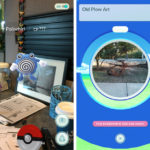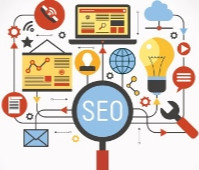Builders Quick to Capitalize on Trend with Online Technologies
Surveys commissioned by Redfin in 2016 and 2015 show that one in five home buyers made bids before seeing a home in person. Even more surprising, nearly 40 percent of people who purchased homes for more than $750,000 bid blindly in 2016. How are builders and sellers accomplishing this feat?
Technology is taking the place of in-person visits to model homes and existing homes. Transplant buyers moving to ultra-competitive markets like Philadelphia, Richmond, and Colorado Springs are now able to bid with confidence against area residents, by exploring homes in vivid detail online.
Realtor and Certified Relocation Specialist in Dallas, Jeannette Rohan says the timing for these new technologies couldn’t be better. “Several major corporations are transplanting thousands of workers to our area, which has created a hot seller’s market for builders and existing home owners. Offer deadlines and multiple bids have made it impossible for out-of-state buyers to see the existing or spec homes they like before they go under contract. The builders who are able to simulate a visit to the community and the model homes are winning these buyers over.”
As I quietly added the phrase “sight unseen” to the end of her sentence, Rohan corrected me. “It’s only sight unseen in the traditional sense. These people aren’t really taking a risk at all. They’re getting intimately familiar with the homes online. They’re making informed decisions about the areas, the communities, the models, and even the elevations and finishes. They’re buying these homes with as much certainty as buyers from the area who do visit the communities and tour the models, and when they move in, they’re just as happy.”
Here are the online technologies and resources enabling out-of-state buyers to get in the game:
Online Virtual Tours
Until you have experienced today’s best-of-breed online virtual tours, you’re likely to continue believing that nothing can replicate the immersive experience of a model home tour. But with virtual tours, buyers can “walk through” model homes, engage with the spaces and appreciate the design flow and layout, as well as materials and textures. The virtual experience actually exceeds the experience of visiting model homes in two very important ways: 1) Builders can cost-effectively make every model available for buyers in every community to tour online; and 2) Buyers can choose elevations, building materials, fixtures, and design options and visually compare them to make more informed choices.
Video and Animation
Video is vivid, entertaining, informative, and actionable. It’s versatile too; builders can use it on their sites, in online listings, on a YouTube channel, and in the sales and design centers. Video is preferred over text on social media, and it’s viral. Transplant buyers talk to one another and share information, which makes it especially valuable for builders trying to capture this market. Video offers a one-time low-cost investment with so many applications.
Professional Photography
Builders are competing against existing homes, yet many fail to provide as many pictures as their existing home competition. For transplants, the more visual information you provide, the better your chances of making the final consideration set. Decisions happen quickly. Quick decisions are often emotional decisions, and emotional decisions are influenced by the senses. So make use of high quality, high quantity dramatic professional photography in your listings and on your sites. Use photography and custom graphics liberally throughout all of your marketing materials. Use it to showcase models, as well as your custom work, interior features, and design options.
3D Renderings and Floor Plans
3D renderings enable buyers to appreciate height, depth, flow, and the relationship of spaces to one another. When you don’t have the advantage of a model home to demonstrate dimension, get a similar impact by using hyper-realistic 3-D renderings with custom color enhancements, including landscaping and lighting for dramatic effect.
Downloadable PDF Brochures
Buyers print and share PDFs, and transplant buyers are especially likely to use them because they come in groups. Use these pieces to balance visuals with text that drives home your brand’s marketing messages and key details about your communities and homes.
Rohan says transplants to competitive markets rely heavily on these resources. “As someone who works closely with corporations and the employees they relocate, I can tell you that all of these materials simplify the process for my clients. Buyers feel good about contracting with builders who do their best to inform them and minimize the risk of such an important decision.”







